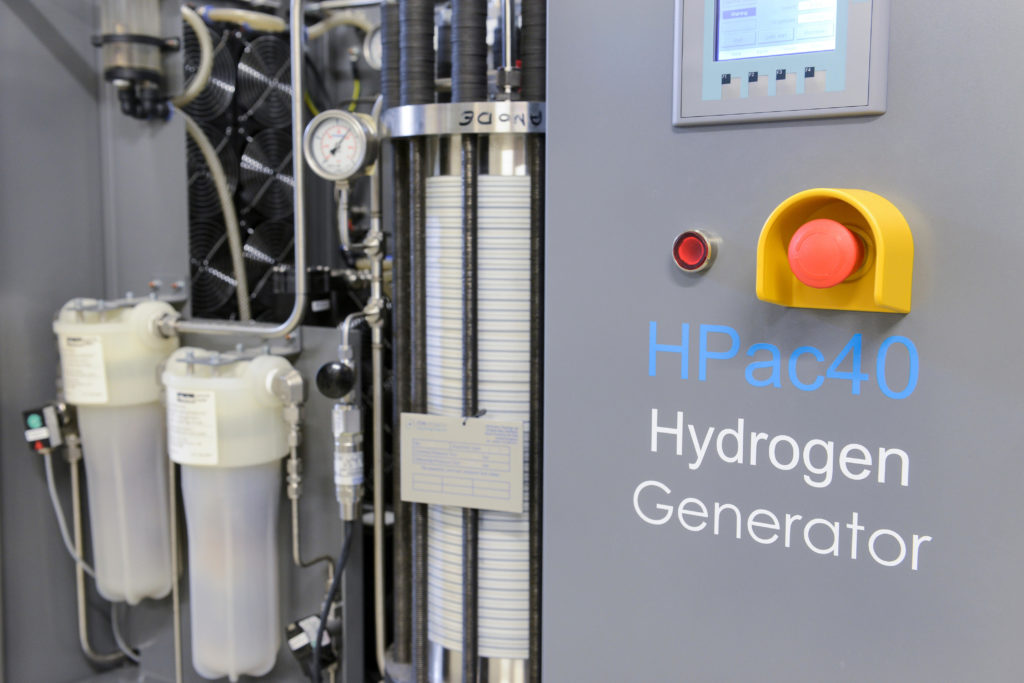KYIV
Naftogaz, Ukraine’s largest oil and gas company, and German energy trading company RWE agreed to cooperate on the development of green hydrogen (electrolysis) industry in the ex-Soviet country in a move to promote decarbonisation.
Green hydrogen is a critical component of the energy revolution since it enables low-emission, decarbonised mobility and is unquestionably critical for meeting the Paris Climate Agreement’s goals. The importance of hydrogen in the decarbonisation of the global economy is evidenced by an increase in project deployments over the past years with hydrogen pledges, plans, and pilots of recent years evolving into concrete commitments, investments and full-scale projects.
The state-owned Naftogaz and RWE plan to collaborate along the full value chain of green hydrogen and its derivatives like ammonia produced in Ukraine. This includes the development of green hydrogen and ammonia production and storage in Ukraine and its import to Germany.
“Naftogaz and RWE intend to jointly explore commercial opportunities for the sale of Ukrainian green hydrogen in European markets, with a focus on RWE’s core markets,” Naftogaz said in a statement.
The partners also intend to jointly consider the possibility to share knowledge of technical aspects along the value chain for green hydrogen.
Working groups representing the two companies will start working together within the next month.
Earlier this month, the European Bank for Reconstruction and Development (EBRD) and Ukraine’s Gas Transmission Operator (GTSOU) agreed to collaborate on the development of green hydrogen production, storage, and distribution infrastructure across Ukraine.
The partnership between the EBRD and GTSOU is expected to help enable the multi-scale production and use of green hydrogen in the country and ensure a secure energy supply as Ukraine transitions to a renewable energy-based economy, EBRD said in a statement.
The agreement will help Ukraine to scale up its green hydrogen production in line with a target set by the European Commission of producing up to one million tonnes of the gas through facilities to be built in the next four years.
Experts say that with the lack of infrastructure identified as the biggest hurdle to increased adoption of green hydrogen, cooperation between various stakeholders within the energy landscape is vital.
“The challenge, therefore, is to develop technology to scale up hydrogen use, to create the necessary conditions and infrastructure for its production, transportation, and consumption,” Sergiy Makogon, GTSOU CEO, said. “All this requires time, effort and cooperation by all stakeholders. We recognise the role of natural gas as one of the key energy sources and transition fuel on the path to a carbon-free economy, which will remain significant for this transition period.”
The signing of the deal followed EBRD’s release of a study on the potential for developing different segments of the hydrogen supply chain across its investment territories including Ukraine. In April 2020, the EBRD and GTSOU also inked an agreement to collaborate on sustainable energy investments and reducing greenhouse gas emissions.
Some experts are sceptical about the creation of hydrogen production, transportation and storage infrastructure in Ukraine and say that the task will require trillions of dollars and a long time.
“With hydrogen accounting for 0.002 percent of total energy consumption, hydrogen can only account for 24 percent by 2050,” Olha Belkova, foreign relations director for Ukraine pipeline operator, said, citing Bloomberg reports.
“It is clear that hydrogen will require huge investments throughout the production and consumption cycle across Europe … It will in no way replace Ukraine’s current gas transit status and its role for the budget and security.”

